11 White Flowering Trees to Transform Your Yard into a Veritable Wonderland
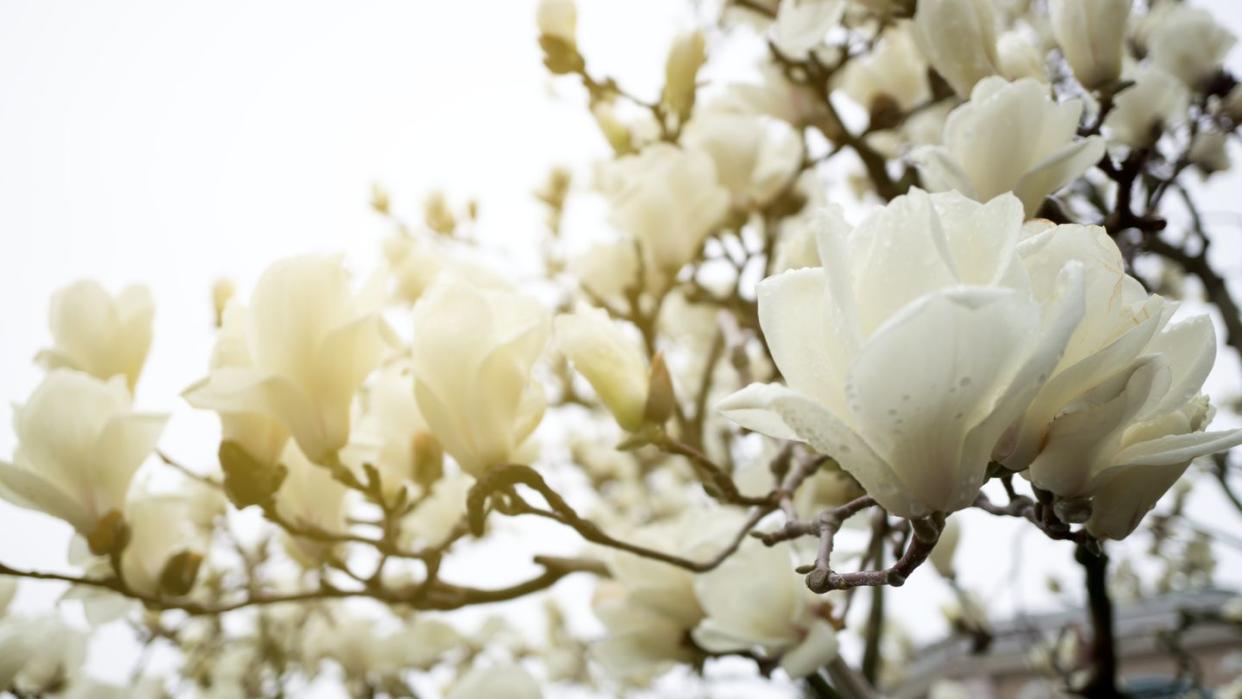
Imagine this: It’s Saturday morning, you lazily arise out of bed, and the first thing you see beyond your window is a wonderland of white blooms. For some, the little luxuries of life can be something that simple. A thriving tree that promises flowering flourishes every year is a solid investment for any outdoor space—and, as it turns out, can be surprisingly low maintenance.
The most important consideration when bringing in a flowering tree is choosing the proper place in your backyard to plant it. Such saplings require a generous amount of sunlight. Furthermore, planting it too close to your house could potentially block light that comes in through your windows, or worse, lead to a fallen tree branch atop your roof.
There’s also the question of climate. Don’t forget to also check the USDA Plant Hardiness Zone Map, which indicates the perennials that will thrive in your location. Check the hardiness zones of your location and scroll on, where you’ll see our notes on the corresponding zones with each tree mentioned. And if there’s any one word of advice we could leave you with, it would be this: Steer clear of the Bradford ear (Pyrus calleryana), an invasive species with rancid flowers that smell like rotting fish or cat urine (yes, you read that right). Nearly every other specimen is immensely more agreeable.
Ready to give your backyard the ultimate glow-up? Wherever you live, we’ve got just the white blooming trees that your landscape needs this summer.
Crape Myrtle
Crape Myrtles require a great deal of sunlight and though they'll still grow under partial shade, you'll be left with fewer blooms. They're known as the "lilac of the South" and can tolerate high heat. As soon as you plant one in your yard, you'll see that the tree makes an excellent home for birds. (Bonus: The plant will bloom for 100 days.)
Scientific Name: Lagerstroemia
Sun Exposure: Full sun, six or more hours per day
USDA Hardiness Zones: Seven to ten
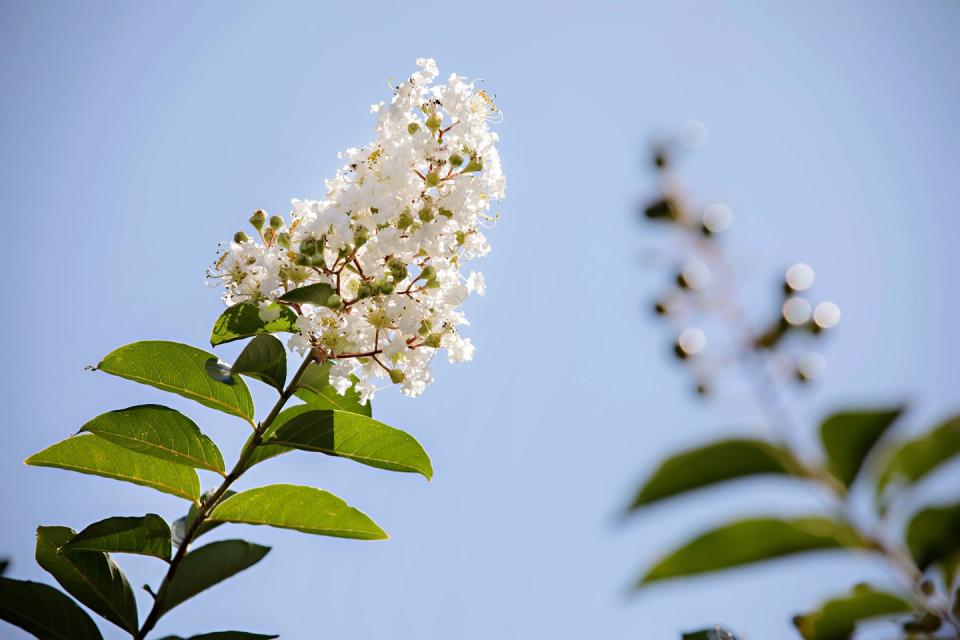
Kousa Dogwood
The Kousa Dogwood is native to Asia. A mature, small to medium-sized tree can grow as high as 30 feet. While it prefers to be in direct sunlight, it will still grow even if it's partly in the shade. Its blooms come in the spring, but in the fall, it produces berries resembling raspberries.
Scientific Name: Cornus kousa
Sun Exposure: Full sun, six or more hours per day; partial sun, four to six hours per day
USDA Hardiness Zones: Five to eight
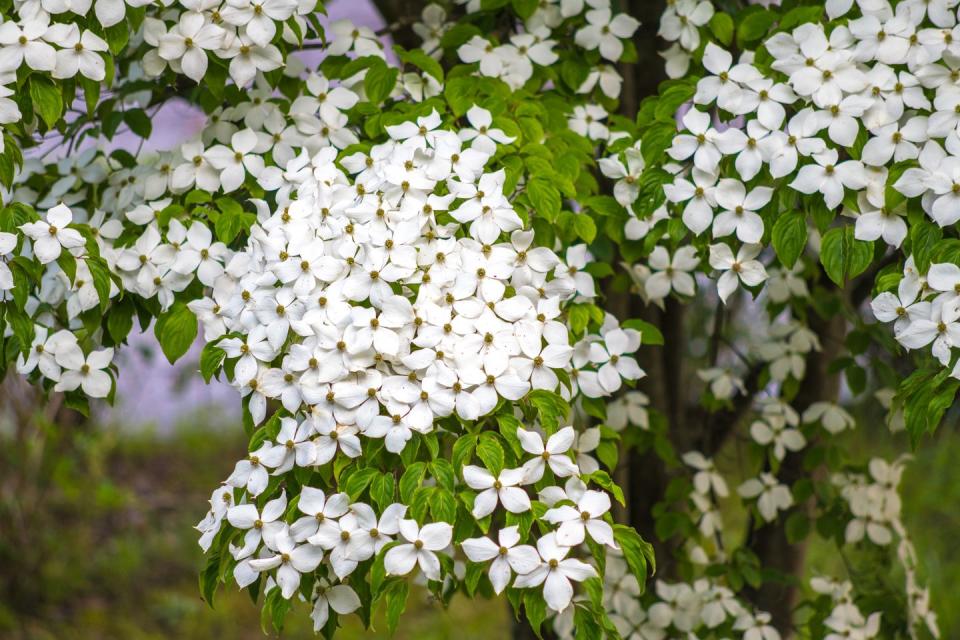
Cherry Blossom
The cherry blossom is considered the national flower of Japan—and for good reason. They can be seen everywhere there, adding charm to many a street. Of course, the states are not without their share of this stunning specimen. They'll typically bloom between March and April, and the plant has the potential to grow up to 50 feet tall. What most people don't know is that the flowers are edible including the stems and leaves. And yes, they do have a natural cherry flavor and scent, as the name suggests.
Scientific Name: Prunus
Sun Exposure: Full sun, six hours per day
USDA Hardiness Zones: Five to eight
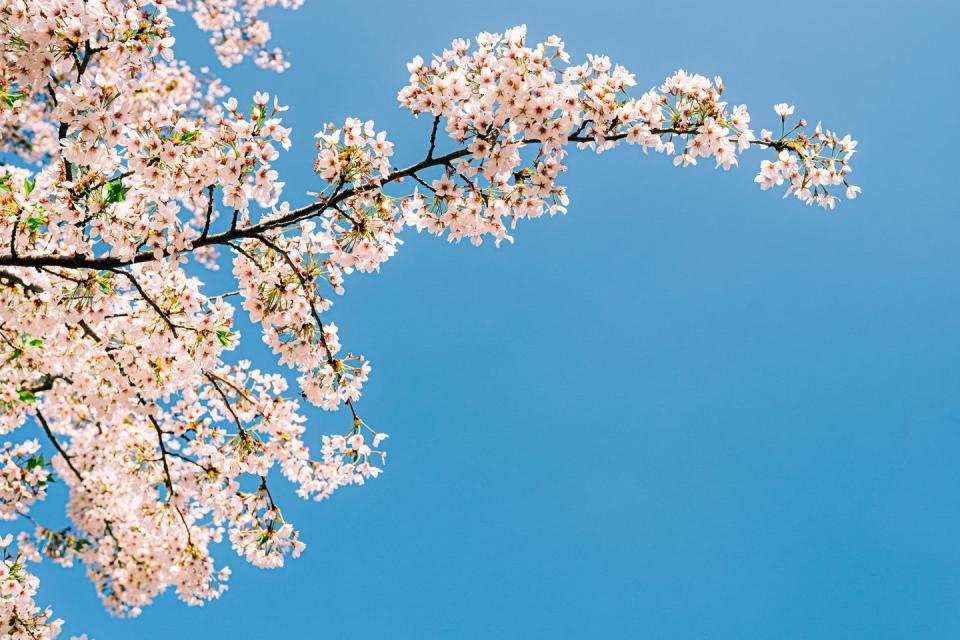
Japanese Snowbell
On the hunt for fragrant flowers? Look no further than the Japanese Snowbell. In its native countries of China, Japan, and Korea, trees are typically planted along paths as a way to elegantly line the streets. Why not consider doing the same in your home?
Scientific Name: Styrax japonicus
Sun Exposure: Full sun, six to eight hours per day; partial shade
USDA Hardiness Zones: Five to eight
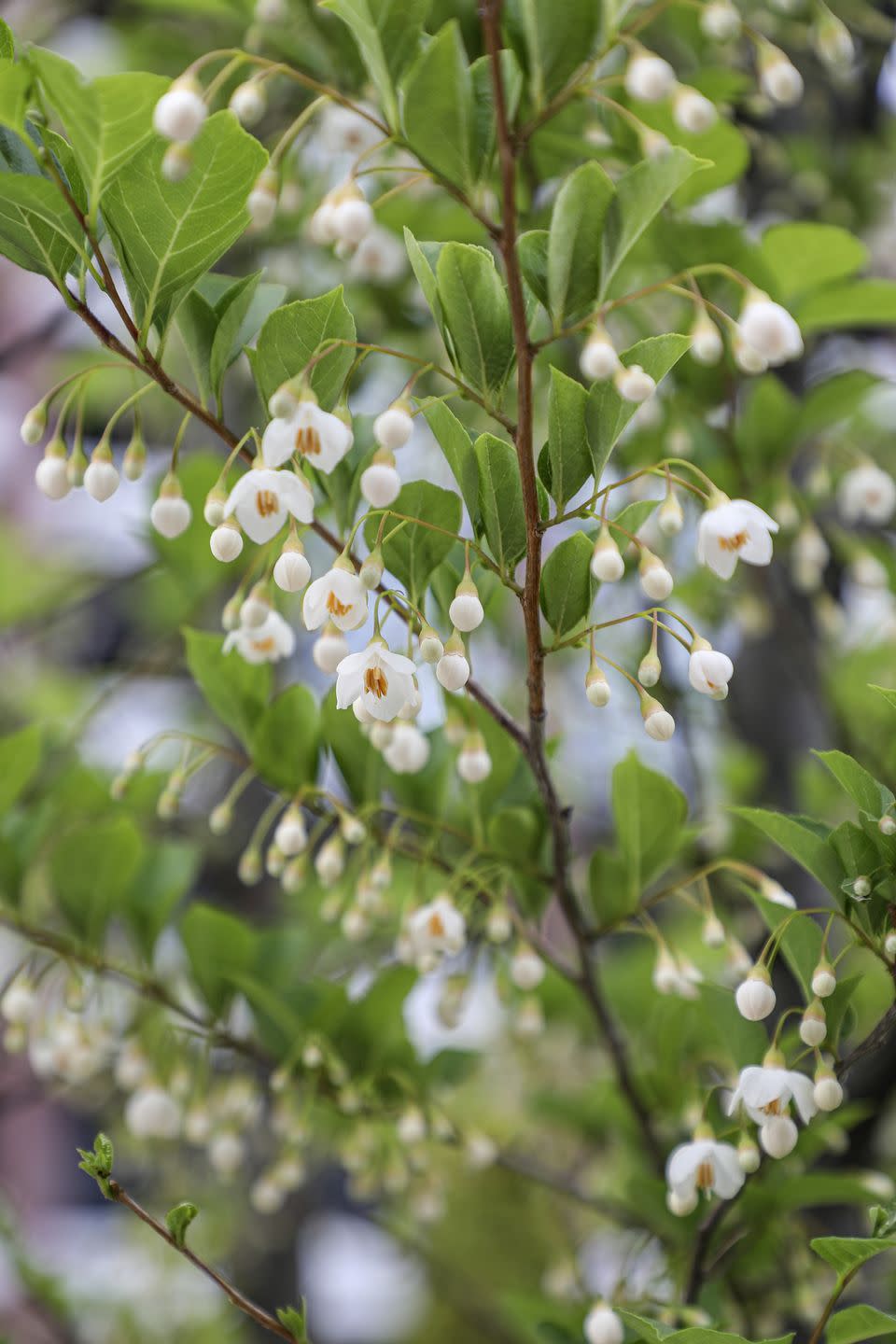
Fringe Tree
You can't go wrong with the sweet, lilac-scented fringe-like flowers of this tree that can get as long as eight inches. It's a head-turning plant that's sure to make a statement on your lawn. And if the tree is a female, it'll bear a bluish fruit set to ripen in September.
Scientific Name: Chionanthus
Sun Exposure: Full sun, six hours or more per day; partial sun, four to six hours per day
USDA Hardiness Zones: Five to nine
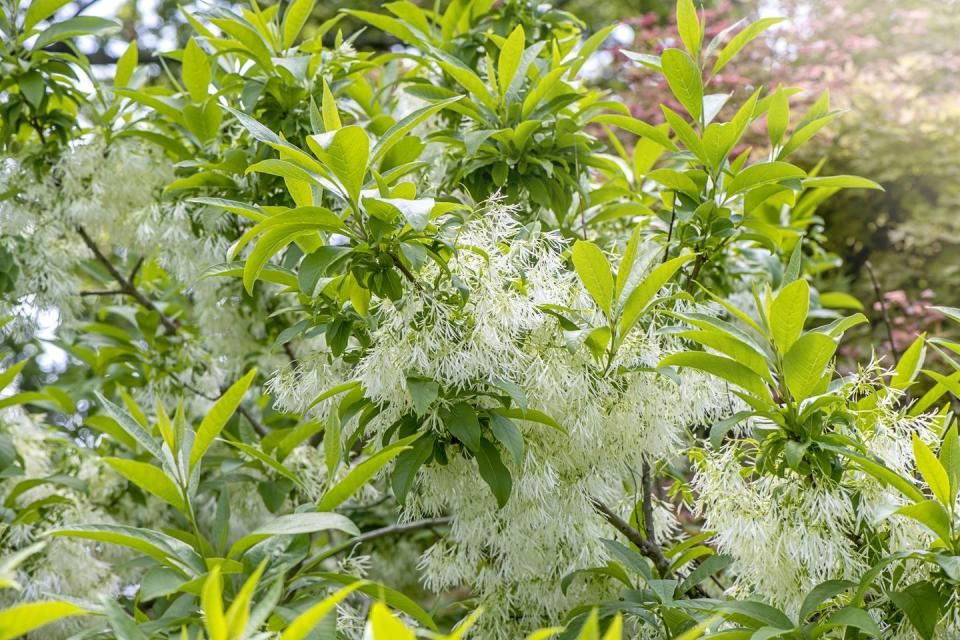
Magnolia
The Magnolia is the state tree of Mississippi and the plant is cherished in the South. However, its history goes way back as scientists believe the first species appeared 95 million years ago. Nowadays, there are over 200 types of Magnolias and they all have the loveliest floral fragrance you'll certainly want at home.
Scientific Name: Magnolia grandiflora
Sun Exposure: Full sun, eight hours per day
USDA Hardiness Zones: Four to nine
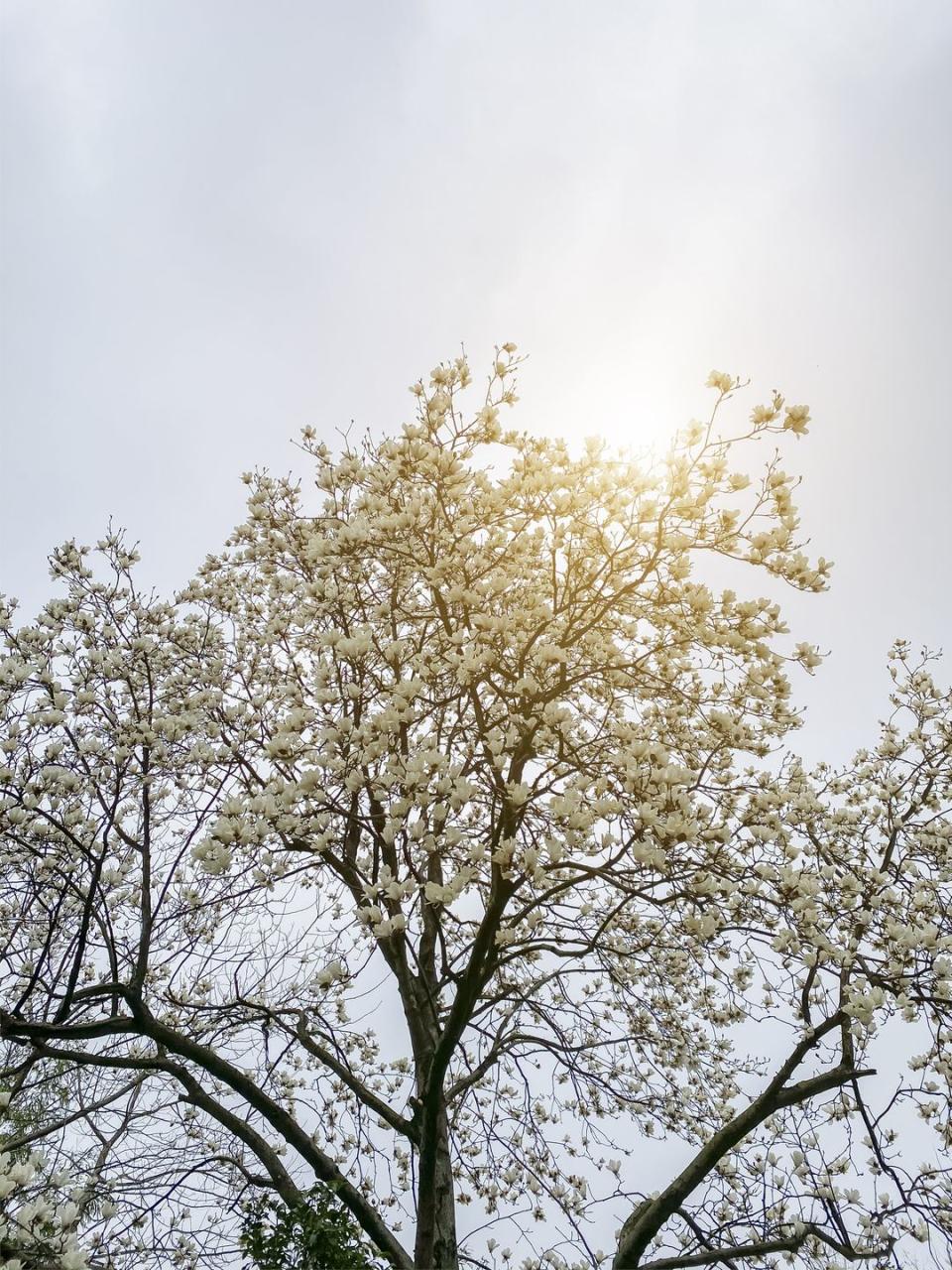
Crab Apple Tree
Next is the drought-tolerant Crab Apple Tree, the most low maintenance plant of all time. You needn't worry about watering this botanical unless you live in an area that seldom gets rainfall. Our favorite part? It has a lengthy lifespan of up to 70 years.
Scientific Name: Malus
Sun Exposure: Full sun, six hours or more per day
USDA Hardiness Zones: Three to seven
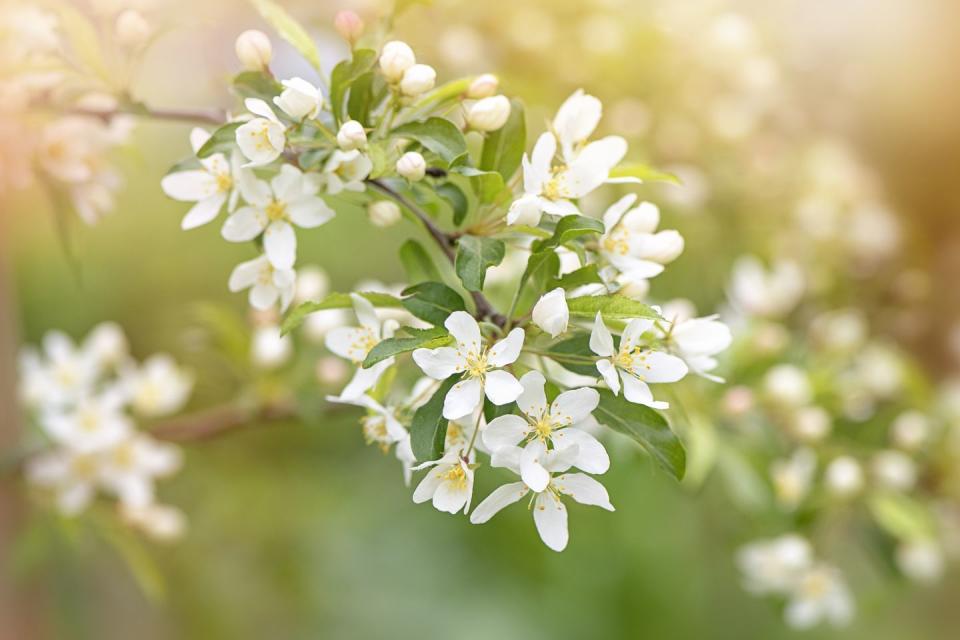
Lilac
Many Lilac shrubs can live well over 100 years, so if you want something made to last, add this to the top of your list. Not only are the flowers incredible to look at and smell, they're edible and make great additions to homemade cocktails. One study suggests that this flower does more than look pretty. One group of researchers concluded that an inability to identify the smell of lilacs can predict which patients with minimal to mild cognitive impairment will develop Alzheimer's Disease.
Scientific Name: Syringa
Mature Size: Full sun, six to eight hours per day
USDA Hardiness Zones: Three to eight
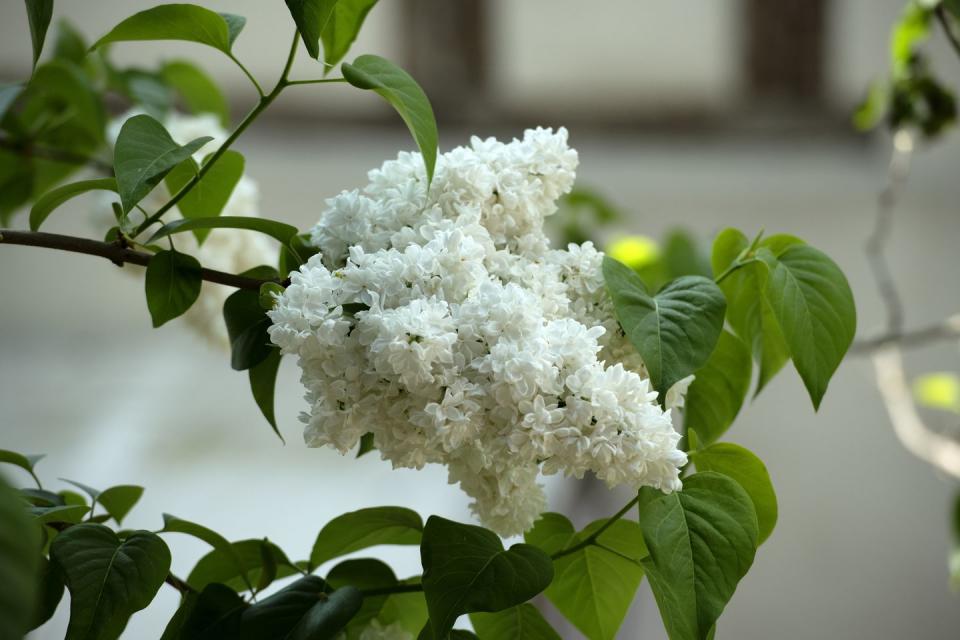
Smoketree
The Smoketree, named after the panicles coming from the tree that give it a hazy appearance, offers blessed covering amid the heat of an August day, as well as a nesting habitat for birds and other wildlife. Its flowers reach peak bloom stage in June.
Scientific Name: Cotinus coggygria
Sun Exposure: Full sun, six to eight hours per day
USDA Hardiness Zones: Five to eight
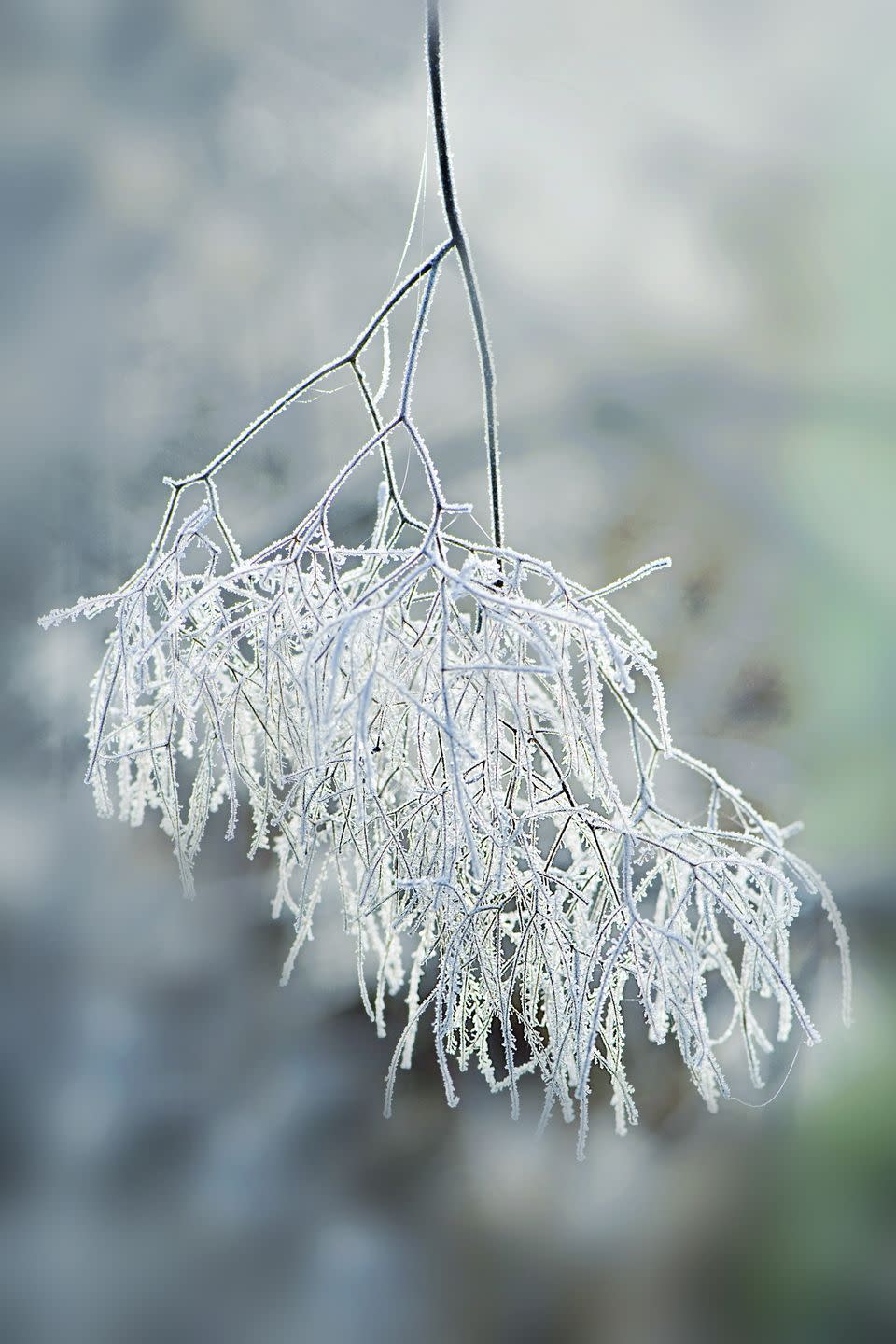
White Wisteria
The White Wisteria is quite the spectacle. In late spring, it can create a cluster of flowers that stretch out to be as long as 24 inches. It's also known as the ultimate symbol of a well-tended garden and if you continue to maintain it, the tree can live up to 50 years.
Scientific Name: Wisteria sinensis
Sun Exposure: Full sun, six hours or more per day
USDA Hardiness Zones: Five to nine
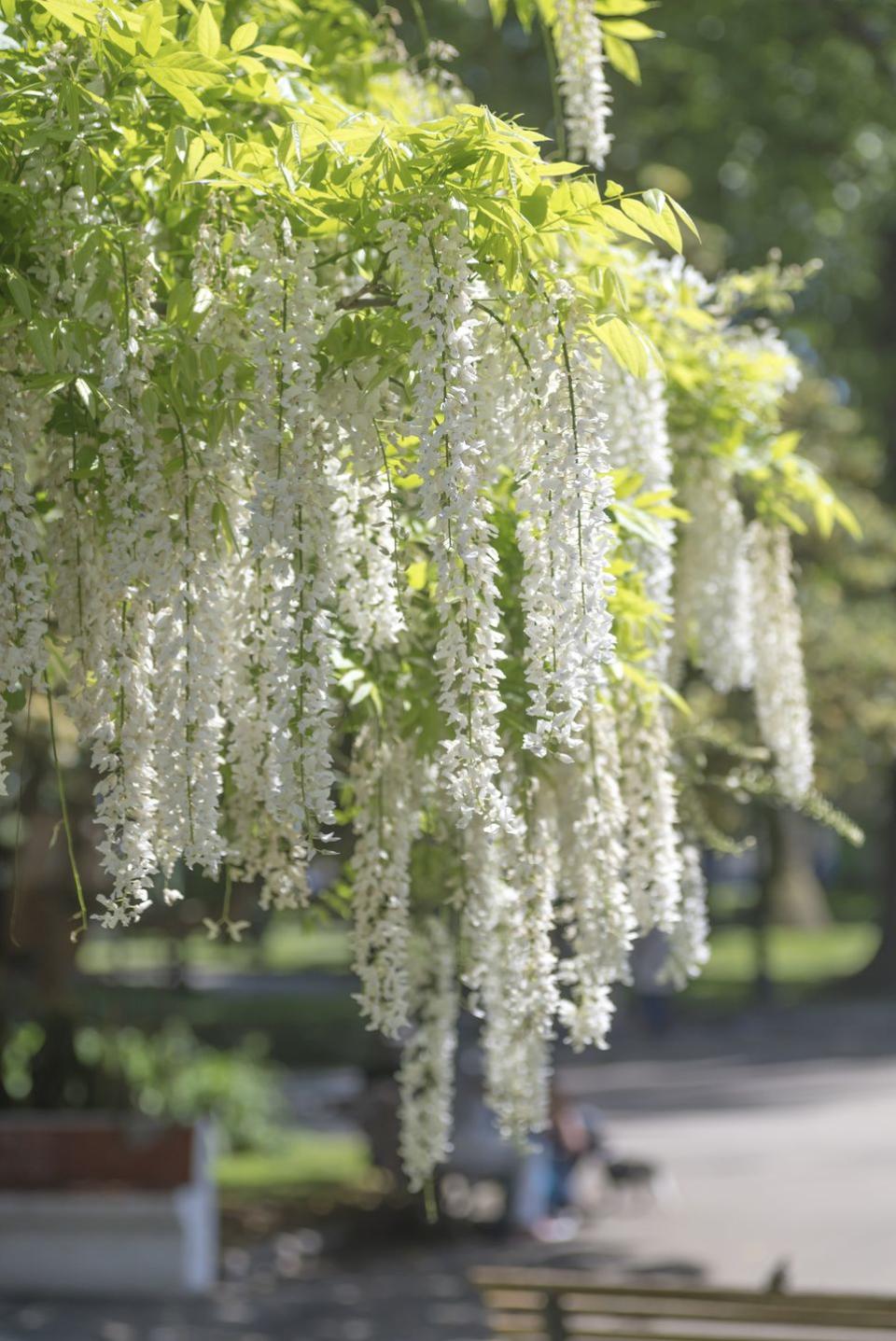
Serviceberry
Fancy a snack? The Serviceberry tree's fruits are edible and taste like a combination of blueberries and blackberries. Due to their sweetness, people make pies with them called Juneberry pies. This name is inspired by June, which is when the fruits ripen. Also, don't be alarmed by the hairy leaves early in its growth period as that's completely normal.
Scientific Name: Amelanchier arborea
Sun Exposure: Full sun, six or more hours per day; partial sun, two to six hours per day
USDA Hardiness Zones: Four to nine
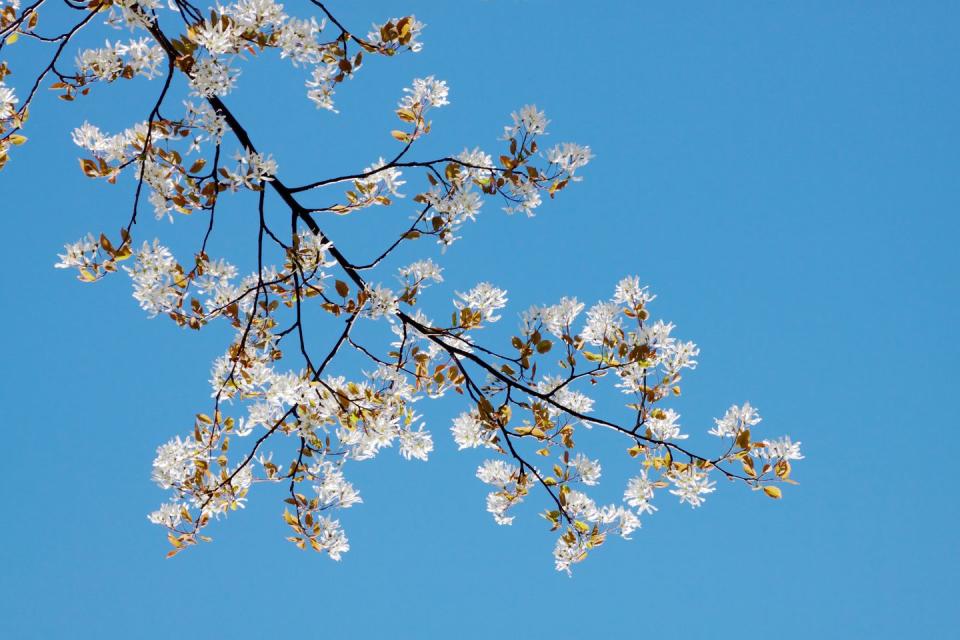
Bougainvillea
Last, but certainly not least, is the stunning Bougainvillea. It was named after the French explorer Philibert Commerçon and his friend, admiral Louis-Antoine de Bougainville who was the first person in France to sail around the world. The plant does best in hot weather and direct sunlight. Overall, it's relatively low-maintenance and pest-resistant.
Scientific Name: Bougainvillea spectabilis
Sun Exposure: Full sun, five or more hours per day
USDA Hardiness Zones: Nine to eleven
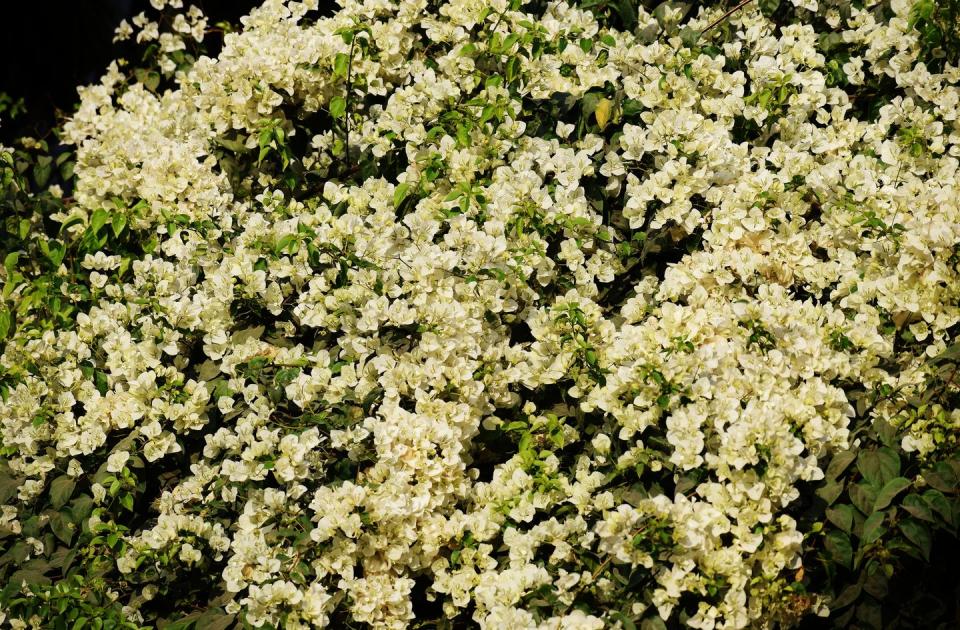
You Might Also Like

